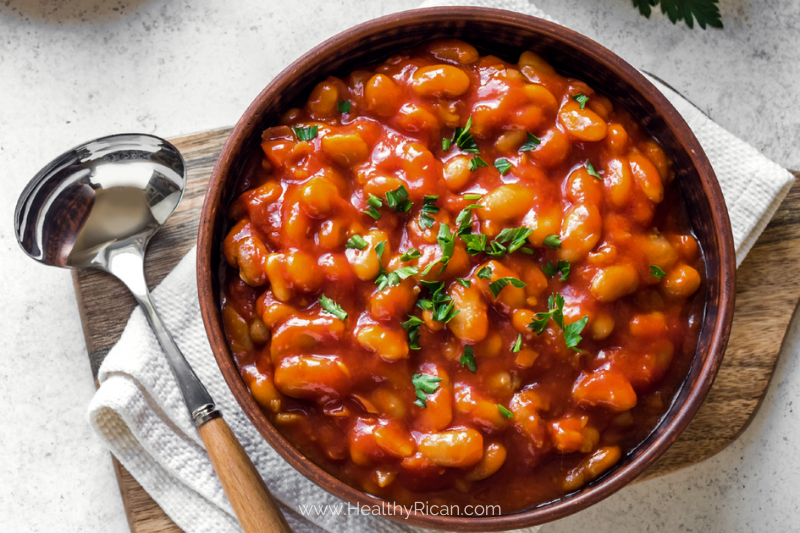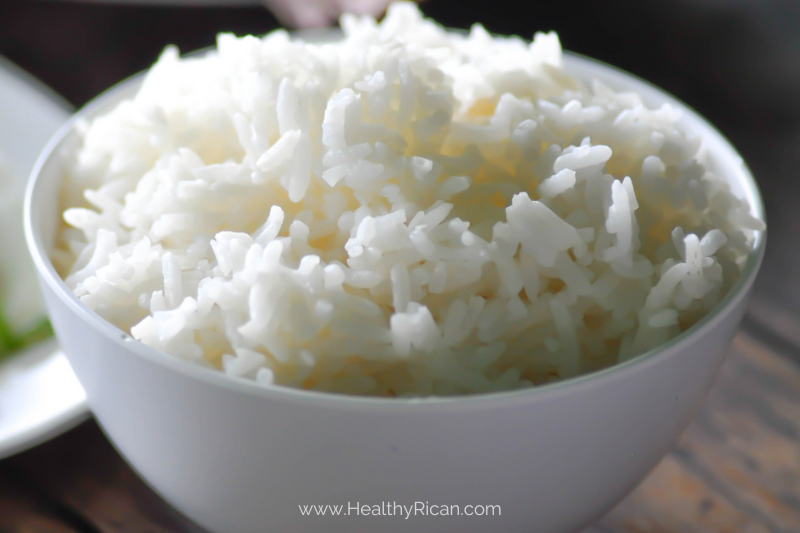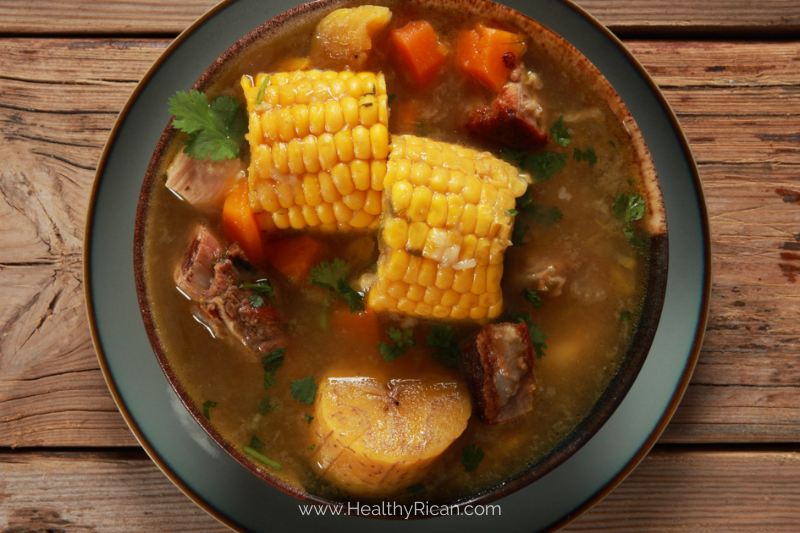Puerto Rican cuisine is a vibrant blend of Spanish, African, and indigenous Taíno influences. The island's cuisine is known for its bold flavors, rich spices, and use of fresh ingredients. In this blog post, we'll explore some of the common ingredients and spices used in Puerto Rican foods and answer the question of whether Puerto Ricans like spicy foods.
What are common Puerto Rican ingredients?

Puerto Rican cuisine is heavily influenced by the island's tropical climate and abundant natural resources. Some of the most common ingredients used in Puerto Rican cooking include:
- Plantains - These starchy fruits are a staple in Puerto Rican cuisine. They can be boiled, fried, mashed, or baked and are used in a variety of dishes, including mofongo, tostones, and pastelón.
- Rice - Rice is a staple in many Latin American cuisines, and Puerto Rican cuisine is no exception. Arroz con gandules (rice with pigeon peas) is a popular Puerto Rican dish that is often served during the holidays.

- Beans - Beans are a common ingredient in Puerto Rican cuisine and are often used in soups, stews, and rice dishes. Red kidney beans, black beans, and pink beans are all commonly used.
- Sofrito - Sofrito is a flavor base used in many Puerto Rican dishes. It's made by blending onions, garlic, peppers, culantro and cilantro and is used to add depth and complexity to dishes like arroz con pollo, carne guisada, and habichuelas.
- Adobo - Adobo is a seasoning blend that is used in many Puerto Rican dishes. It typically consists of garlic powder, onion powder, oregano, salt, and black pepper and is used to season meats, poultry, and fish.
- Yuca - Yuca, also known as cassava, is a starchy root vegetable that is used in many Puerto Rican dishes. It's often boiled and served with a garlic and olive oil sauce or fried and served as a side dish.

Spices Used in Puerto Rican Foods
Puerto Rican cuisine is known for its bold and vibrant flavors, and spices play a key role in achieving those flavors. Some of the most commonly used spices in Puerto Rican cooking include:
- Cumin - Cumin is a popular spice in Latin American cuisine and is used in many Puerto Rican dishes. It has a warm, earthy flavor and is often used to season meats and beans.
- Paprika - Paprika is a spice made from dried and ground peppers and is often used in Puerto Rican dishes to add color and flavor. It can be mild or spicy, depending on the variety.
- Sazón - Sazón is a seasoning blend that is commonly used in Puerto Rican cooking. It typically consists of garlic powder, onion powder, cumin, coriander, annatto, and salt and is used to season meats, poultry, and rice dishes.
- Adobo - As mentioned earlier, Adobo is a seasoning blend that is commonly used in Puerto Rican cooking. It's a versatile seasoning that can be used on meats, poultry, fish, and vegetables.
- Oregano - Oregano is a common herb in Puerto Rican cuisine and is often used to season meats and sauces. It has a pungent, slightly bitter flavor and pairs well with other spices like cumin and paprika.
Do Puerto Ricans Like Spicy Foods?
While Puerto Rican cuisine is known for its bold and vibrant flavors, it's not necessarily known for being spicy. In fact, many traditional Puerto Rican dishes are not spicy at all. However, this doesn't mean that Puerto Ricans don't like spicy foods.
Like most cultures, Puerto Rican cuisine is diverse, and individual preferences vary. Some Puerto Ricans enjoy spicy foods and incorporate hot peppers and spices like cayenne and chili powder into their cooking. Others prefer milder flavors and opt for herbs and spices like oregano and cumin.
It's worth noting that Puerto Rican cuisine is not typically as spicy as some other Latin American cuisines, like Mexican or Peruvian. This is likely due to the fact that Puerto Rican cuisine is heavily influenced by Spanish and African cultures, which are not known for their use of spicy peppers.
While Puerto Rican cuisine is not known for being particularly spicy, there are still many dishes that incorporate spicy ingredients. Here are some examples:
- Pique - Pique is a spicy sauce made with vinegar, hot peppers, and garlic. It's often served with seafood dishes like ceviche or fried fish.
- Mofongo con camarones en salsa criolla - Mofongo is a dish made with mashed plantains and garlic, and it's often served with seafood or meat. When served with shrimp in a criolla sauce (which includes tomato sauce, onions, peppers, and spices), it can have a spicy kick.
- Carne guisada - This is a classic Puerto Rican stew made with beef, potatoes, carrots, and other vegetables. It's often seasoned with adobo and sazón, which can give it a slightly spicy flavor.
- Arroz con pollo - Arroz con pollo is a popular Puerto Rican rice dish that is often seasoned with sazón and other spices like cumin and paprika. Depending on the recipe, it can have a slightly spicy flavor.
- Habichuelas guisadas - These are stewed beans that are often served as a side dish. They're seasoned with sofrito, sazón, and other spices, which can give them a slightly spicy flavor.
- Asopao de pollo - Asopao is a type of soup or stew that is made with rice, chicken, and other ingredients like vegetables and olives. It's often seasoned with a variety of spices, including cumin and paprika, which can give it a slightly spicy flavor.
While these dishes may not be extremely spicy, they do incorporate some heat through the use of spices and hot peppers. As with any cuisine, the level of spiciness can vary depending on the recipe and personal preference.
P.S. Ingredients used in the video below: 5 serrano hot peppers, 6 garlic cloves (I like it garlicy), 3 recao (culantro) leaves, 12 peppercorns, 2 tablespoons apple cider vinegar, 2 tablespoons Healthy Rican Sofrito, 2 tablespoons olive oil, water as needed to fill the bottle. Amounts can vary depending on the intensity of the spices/hot peppers as well as the size of the jar.

Pique Puertoriqueño
Ingredients
- 5-10 pcs hot peppers the amount depends on the size of the jar and how spicy you'd like it.
- 2 tbsp apple cider vinegar
- 3-5 cloves garlic chopped or minced
- Filtered water as needed to fill the bottle
Optional spices
- 1 tsp salt
- 1 tsp black pepper
- 1 tbsp oregano
- 1 tbsp paprika
- 2-3 pcs cilantro leaves
- 1 tsp Adobo instead of salt and other spices
- 1-2 tbsp Healthy Rican Sofrito for extra flavor
Instructions
- Start by wearing gloves to protect your hands while handling the hot peppers. Remove the stems from the peppers and finely chop them.
- In a glass jar with a tight-fitting lid, add the chopped peppers, minced garlic, salt, black pepper, oregano, and paprika.
- Pour the vinegar and water into the jar, covering the pepper mixture completely.
- Seal the jar tightly and give it a good shake to ensure all the ingredients are well combined.
- Store the jar in a cool, dark place for at least a week to allow the flavors to meld together. Shake the jar occasionally to distribute the flavors.
- After a week, strain the piqué through a fine-mesh sieve to remove any solid particles, or you can leave it as is for a more textured sauce.
- After a week, strain the piqué through a fine-mesh sieve to remove any solid particles, or you can leave it as is for a more textured sauce.
- Your Puerto Rican piqué is now ready to be used as a condiment or added to your favorite dishes.
- Remember to adjust the amount of hot peppers according to your heat tolerance, and feel free to experiment with additional spices or ingredients to personalize your piqué.

